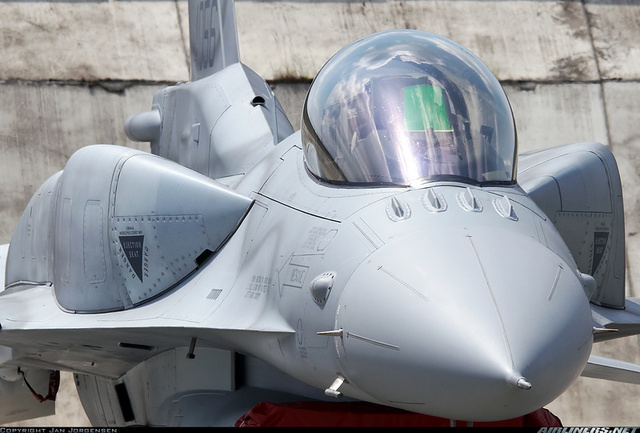Amid growing concerns the Middle East faces major security threats, Iraq has ordered a second batch of Lockheed Martin F-16IQ fighters worth $830 million.
The U.S.-trained air force is expected to start taking delivery of 18 F-16 Block 52 jets ordered under a $4.3 billion deal in December 2011 sometime this year and pilots are already being trained to fly the supersonic aircraft by the U.S. Air Force in Nevada.
But it's unlikely the Iraqi air force, which reportedly seeks a final inventory at least 96 F-16s, will have an operational combat capability of any kind until 2015.
The new purchase underlines that the United States remains Iraq's main supplier of advanced weapons, despite ongoing negotiations for a $5.2 billion arms package from Russia and the Czech Republic.
There have been conflicting reports about the scale of the deal Iraq's seeking with Moscow, first announced when Iraq Prime Minister Nouri al-Maliki visited the Russian capital in October 2012.
Maliki is also reported to have signed to buy 28 L-159 Alca advanced trainer/light attack aircraft built by Aero Vodochody of the Czech Republic when he visited Prague in October.
As far as is known, neither of the deals involved Russia, Saddam Hussein's main arms supplier, and the Czech Republic have been finalized or signed, underlining speculation that Baghdad is using the prospect of the deals to pressure the United States to accelerate delivery of the first batch of F-16s and other U.S. military equipment ordered by Iraq.
Arab media reports say Maliki has been complaining to Washington about delays in deliveries of U.S. systems, the first-batch F-16s in particular. They were supposed to be delivered in 2012, then 2013 and are expected in 2014.
While Washington may be having political qualms about arming Maliki's armed forces amid Baghdad's inability to contain, let alone crush, worsening sectarian bloodletting, spillover from the war in neighboring Syria and Kurdish separatism, it cannot afford to let Maliki buy his weapons elsewhere.
With a defense and security budget of some $16.4 billion for 2013 and a large procurement plan, Iraq offers significant opportunities that U.S. defense contractors, like their rivals, cannot afford to ignore as their reliance on exports swells as domestic defense budgets shrink.
Oxford Analytica observed in a recent analysis of Iraq's defense market that the United States, up to now Baghdad's main arms supplier, "will face stiffer international competition from Russian, Former Soviet Union, European and Asian arms vendors" -- meaning China -- "in the coming years."
But it added: "Iraq is unlikely to represent a very large opportunity for defense sales until it has met more pressing spending commitments and increased the government's capacity to raise and spend larger investment budgets."
Oil-rich Iraq "will only become a very lucrative defense market after 2020, when it could be one of the top opportunities in the global defense sector," Oxford Analytica concluded.
Iraq's main priority right now is to upgrade and expand its energy industry, the country's economic mainstay, and to achieve its target of boosting oil production to 8 million-9 million barrels a day by 2020 from the current 3 million bpd.
Continued high oil prices will ensure that allow it to boost defense spending.
Since 2005, the United States has delivered or is evaluating arms sales to Iraq of around $19 billion, including the 36 F-16IQ Block 52 fighters, enough for two squadrons.
Iraq is planning to have at least four major airbases, one each in the north, the south, the west and outside Baghdad.
A $10.9 billion arms package sealed in August 2008 included six Lockheed Martin C-130J Super Hercules transport aircraft. The third was delivered in December 2012, with the other three expected in 2013.
That package also covered 25 Bell 407 scout/attack helicopters, 140 upgraded Abrams M1A1 main battle tanks built by General Dynamics Land Systems and 160 Guardian armored security vehicles made by Textron Marine and Land Systems.
[via]























.jpg)

Post A Comment:
0 comments:
Post a Comment